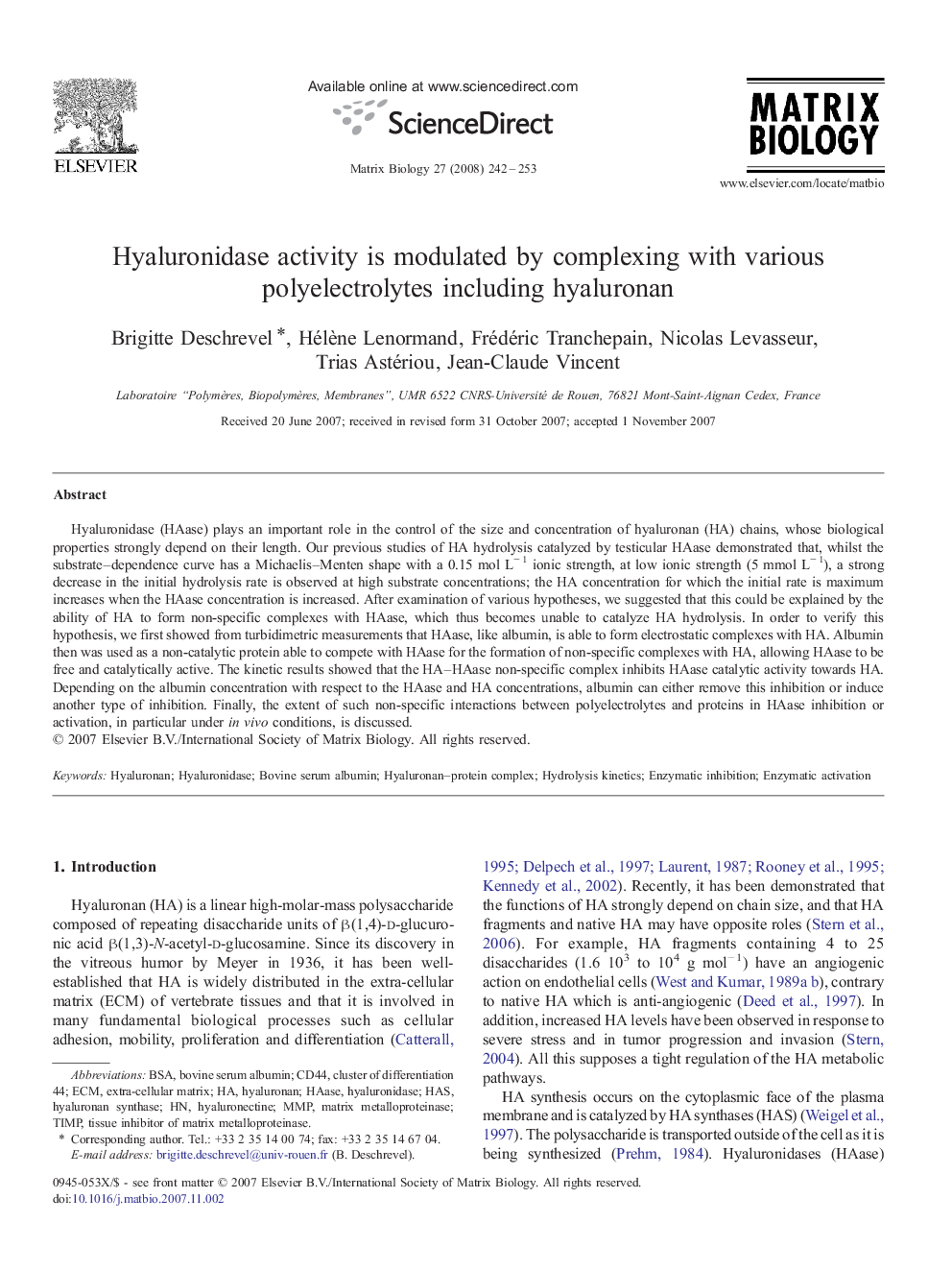| Article ID | Journal | Published Year | Pages | File Type |
|---|---|---|---|---|
| 2145108 | Matrix Biology | 2008 | 12 Pages |
Hyaluronidase (HAase) plays an important role in the control of the size and concentration of hyaluronan (HA) chains, whose biological properties strongly depend on their length. Our previous studies of HA hydrolysis catalyzed by testicular HAase demonstrated that, whilst the substrate–dependence curve has a Michaelis–Menten shape with a 0.15 mol L− 1 ionic strength, at low ionic strength (5 mmol L− 1), a strong decrease in the initial hydrolysis rate is observed at high substrate concentrations; the HA concentration for which the initial rate is maximum increases when the HAase concentration is increased. After examination of various hypotheses, we suggested that this could be explained by the ability of HA to form non-specific complexes with HAase, which thus becomes unable to catalyze HA hydrolysis. In order to verify this hypothesis, we first showed from turbidimetric measurements that HAase, like albumin, is able to form electrostatic complexes with HA. Albumin then was used as a non-catalytic protein able to compete with HAase for the formation of non-specific complexes with HA, allowing HAase to be free and catalytically active. The kinetic results showed that the HA–HAase non-specific complex inhibits HAase catalytic activity towards HA. Depending on the albumin concentration with respect to the HAase and HA concentrations, albumin can either remove this inhibition or induce another type of inhibition. Finally, the extent of such non-specific interactions between polyelectrolytes and proteins in HAase inhibition or activation, in particular under in vivo conditions, is discussed.
